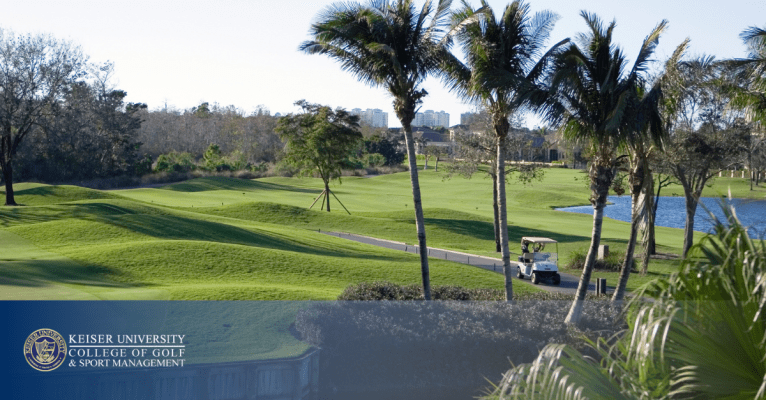Why Do Golf Courses Punch Greens?
Golf course superintendents must take it upon themselves to keep the course and the greens in the best possible condition throughout the year. The downside to this is that at least once a year, the greens have to be punched. This is also called aeration.
Few things are more frustrating to golfers than having to putt on aerated greens, but like many situations in life, good things come to those who are patient and understanding. The punched greens will roll the ball truer, stop balls better, and look amazing. So it’s definitely worth a little bit of inconvenience.
Aerated Greens
Most golf courses shut down for the day of aeration because the process takes some time and must be done correctly to maximize the effectiveness. An aerating machine is basically driven around the greens, and it punches holes about every two inches. Each of the holes is about one-half inch deep. The result is a green that resembles Swiss cheese. Once the holes are punched, they are then filled in with sand or some other mixture.
What Does Aerating Greens Do?
Aerating greens is a common and important practice in golf course maintenance that improves air and water circulation in the soil. The aeration process helps relieve soil compaction, promote root growth, and enhance grass health. Aeration also allows for better nutrient absorption and helps prevent disease.
How Long Does It Take Aerated Greens to Recover?
The punched greens will typically improve each day, but you can expect to have some difficult putting surfaces for at least the first three days after the process is finished.
You shouldn’t let aerated greens spoil your round. Tom Watson shot a record round of 58 at his home course just a few days after the greens were punched.
If you’re putting isn’t the best part of your game, at least you can blame it on the greens for a couple of rounds.
Why Do Golf Courses Aerate Greens?
The goal of aerating greens is twofold. First, the process helps to reduce the likelihood that the soil will compact on the greens. The second goal is to get air circulating down through the soil and the roots. The hope is that this will keep everything healthy for many years to come.
If both of these goals are achieved on the greens, course caretakers will be overjoyed because much less thatch will grow in these areas. Thatch is helpful to an extent, but excessive thatch can destroy greens by attracting insects and possible diseases to the grass.
Benefits of Aerating Golf Greens
As mentioned, a primary benefit of aeration is its ability to improve soil structure. This promotes better water and nutrient absorption. Additionally, it lessens soil compaction, which can hinder turfgrass’s root growth. Other benefits include preventing thatch buildup and improving overall playing conditions. Aeration leads to a more resilient and vibrant turf. Additionally, it creates smoother surfaces, allowing for more consistent putting experiences.
An Ounce of Prevention
When done regularly, aerated greens will have an amazing impact on the golf course and the nature alongside it. The true enjoyment comes once the greens have finally returned to greatness.
If aerating is not done, greens will die. They will lose their healthy look and become like regular grass. Golf courses managers would then have to spend countless amounts of money and work to restore the greens to a playable level.
Aerating greens is a necessary component to golf course maintenance. You likely change the oil in your vehicle to ensure it performs at an optimum level, so don’t stress when the greens have been punched because doing so will keep them healthy for a long time.
New Aerating on the Way
Some other ways to aerated include using a machine that sticks sharp tines, similar to knives, throughout the surface of the green. Some new technology is available that could possibly provide a similar result to punching by using water to create the holes. There seems to be some early success with this method, and it allows the greens to recover a little faster.
Play It As It Lies
Unfortunately, the rules of golf state that you cannot receive relief or any other form of assistance due to aerated greens. Some courses do offer a three-putt maximum when the greens are punched, but each managing team makes that decision.
Aerating greens is essential to keep the course in excellent condition. If this type of maintenance really bothers you, consider calling ahead and asking when the greens will be aerated. This will allow you the time to plan accordingly.
As technology continues to develop, better methods of grass care may evolve. Until then, have patience, putt well, and remember that punched greens are good for the game.
Interested in a Career in Turfgrass Management or Groundskeeping?
Are you passionate about maintaining beautiful golf landscapes or maintaining golf course conditions? Then, a career in turfgrass management or groundskeeping may be right for you. Turfgrass management offers many opportunities including managing the health of greens and overseeing landscaping projects.
Watch a video from Keiser College of Golf’s YouTube channel or visit the Keiser Golf site today to learn more about our Associate in Turfgrass Management!
If you want to take your game to the next level, contact our team at Keiser University’s College of Golf & Sport Management today. With our dedication and experience, we can elevate your game to new heights together. Give us a call today at 888-355-4465.















